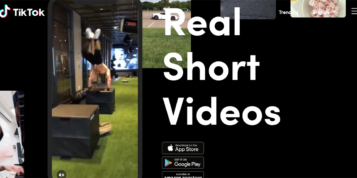You would be forgiven for thinking public relations was one thing – comprising activity such as writing press releases, conducting media briefings and attending events – and using social media for marketing purposes was another, but in today’s digital world it isn’t that black and white. Both disciplines underpin each other, as does SEO and social or SEO and PR, so having a good understanding of how Twitter can be used to assist PR efforts is crucial.
Below are a number of ways in which Twitter can be used to help achieve strategic PR aims.
Finding media coverage opportunities
Twitter is increasingly being used as a discovery tool by consumers and business. Not only can it locate potential clients, it can also be utilised to understand what publications are going to be publishing and what they have printed, meaning you can look out for openings to secure reactive comment pieces.
Searching for key terms relating to a business, your target publications (which you should be following anyway) and specific hashtags, such as #journorequest, can all locate chances to obtain coverage.
Finding relevant journalists
When reading relevant articles from your target print and online publications, take note of who the writers are and follow them on Twitter. I would also recommend grouping them into a list so that you can easily filter your Twitter stream. Reporters often post about what they’re currently working on, or about to start researching, so it’s invaluable to keep an eye on what they tweet.
Furthermore, Twitter sends you emails with suggestions similar to your current interests, which are an extremely useful resource. For example, once you have followed a couple of journalists or bloggers that work in a specific field or geographical area, you will be sent recommendations of similar people. This can be key to finding new target publications.
Contacting publications and journalists
By undertaking the above activity, you may see a request from a journalist or secure a piece of coverage that your business can provide reactive comments on, and it would be perfectly acceptable to respond on the platform. If the other party is following you back, you may wish to direct message to ensure you don’t break whatever story you have to offer. If they are not, make initial contact to secure a more in-depth conversation over email or on the phone.
Other ways of alerting reporters to your news is to send them an @ message with a link to a press release or your blog. If you have repeatedly emailed or tried to call a particular writer, you may wish to send a tweet as a follow-up to ascertain interest. A number of journalists will react much quicker on social networks due to the email overload so many often encounter.
Also, asking politely for a retweet is something I see more and more often, especially when it comes to local events. Not only can you ask publications and journalists to RT your news, but also other influencers using the platform, such as celebrities and industry leaders. However, with all of these activities you must remember not to overdo it. Each person will be able to publicly see who else you are trying to court and most journalists are looking for angles bespoke to them.
Networking
Just as you may attend a conference to meet with influencers, potential clients or customers and journalists, you can use Twitter to virtually network. Recently a local journalist friend and I came across two hashtags within a couple of minutes of each other, they were #cambshour and #shropshirehour. We both live, and he works, in Northamptonshire, so we created #northantshour.
We set the day and time – Thursdays at 8pm – and started to promote our new networking group. Low and behold the first session was used by 32 separate Twitter accounts and now three weeks later, many more are involved. It has proved useful for local journalists to receive tip-offs and find inspiration for stories, businesses to find new customers and as a forum to help promote fellow local companies by retweeting ‘Hi, we’re X and we do X. Here’s our website’ type posts.
It may not be so easy for you to find or create an engaged group that is aligned to your business field or geographical area, but there is longevity in tapping into collections of people who have a common interest and it’s worth investing a little time.
The PR shift
Any PR professional will tell you that the industry has dramatically changed alongside the growth of online. Many journalists now no longer have the time to spend time chatting through potential story angles on the phone as they are responsible for multiple print and digital sections and are bombarded with emails. Therefore, it is crucial for in-house and agency teams to manage a business’ public image and reputation through PR campaigns more innovatively.
Effectively utilising Twitter is just one example of how in today’s digital world it is possible to cut through other brands’ noise and identify worthwhile media coverage opportunities. Significantly, Twitter offers public relations professionals a free-to-use platform that can provide meaningful returns.





